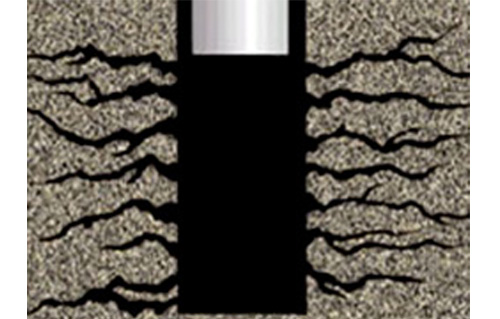What is well Acidizing
Acid stimulation refers to using a stimulation fluid containing reactive acids to increase permeability in perforating wells with carbonate or sandstone. In this way, acid chemicals can dissolve various acid-soluble solids which naturally present in the rock matrix. It is used in well workover, well intervention, or well completions.
In this operation, acid, usually hydrochloric, is injected into a carbonate formation at a pressure above the formation-fracturing pressure. Flowing acid tends to etch the fracture faces in a nonuniform pattern, forming conductive channels. These channels can remain open without a propping agent after the fracture closes.
Stimulation is performed on a well to increase or restore production. Sometimes, a well initially exhibits low permeability, and stimulation is employed to commence production from the reservoir. In other cases, stimulation is used to further encourage permeability and flow from an already existing well that has become under-productive.
As a type of stimulation treatment, acidizing is performed below the reservoir fracture pressure in an effort to restore the natural permeability of the reservoir rock. Well acidizing is achieved by pumping acid into the well to dissolve limestone, dolomite and calcite cement between the sediment grains of the reservoir rocks. There are two types of acid treatment: matrix acidizing and fracture acidizing.

Hubei Petrokh provides acidizing and chemical treatments for oil, gas and injection wells. We also offer custom hydrochloric acid blends, anti-sludge systems, and a complete line of other oil field stimulation blends and chemicals. Acidizing offers a quality economical alternative to major service providers, yet has the ability to perform a range of services from the smallest of treatments to large complex jobs.






 YLC70-265 Acid Fracturing Truck (700)
YLC70-265 Acid Fracturing Truck (700) YLC105-1200 Acidizing Unit
YLC105-1200 Acidizing Unit YLC70-600 Acid Fracturing Truck
YLC70-600 Acid Fracturing Truck Frac Acid Pumps
Frac Acid Pumps Skid Mounted Acid Pumps
Skid Mounted Acid Pumps Truck Mounted Acidizing Pumps
Truck Mounted Acidizing Pumps Trailer Mounted Acidification Pumper
Trailer Mounted Acidification Pumper